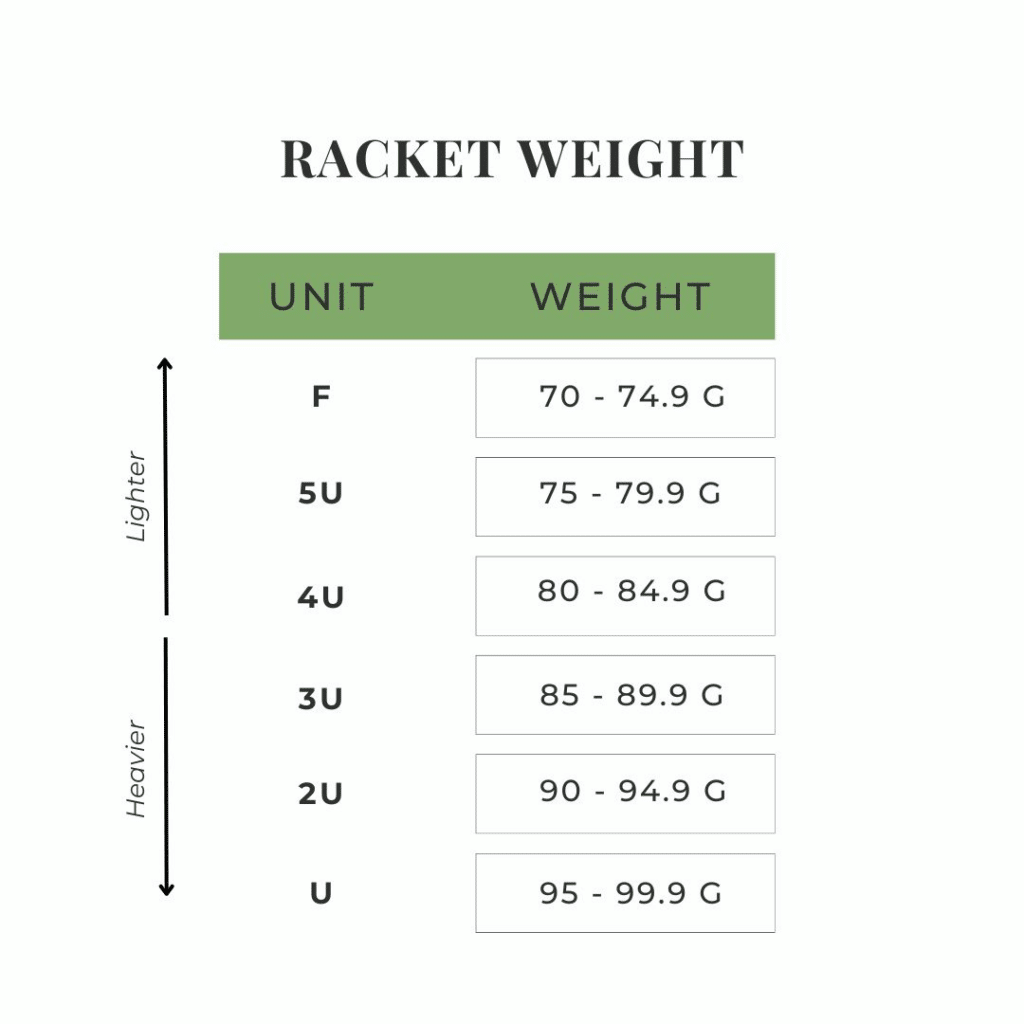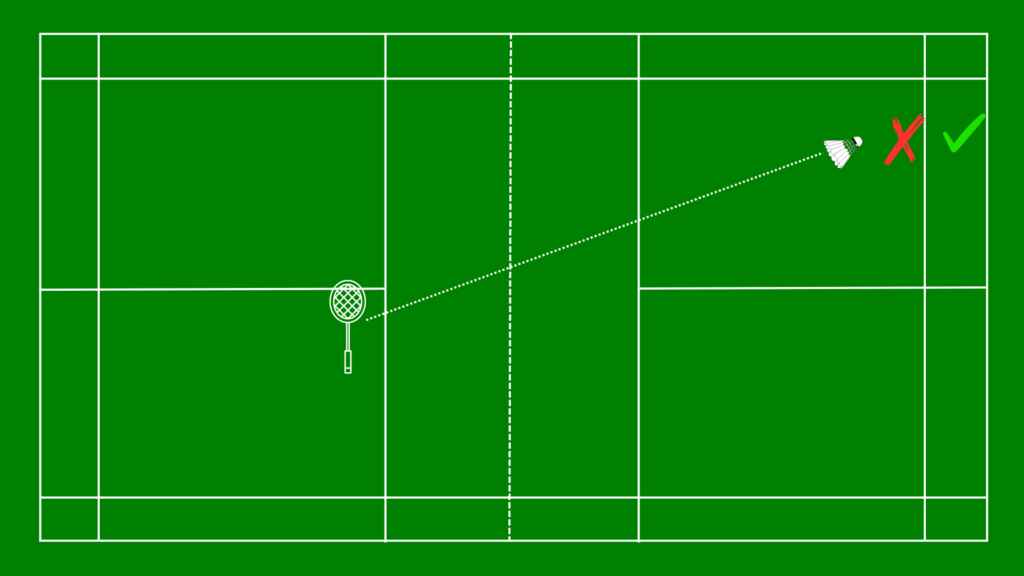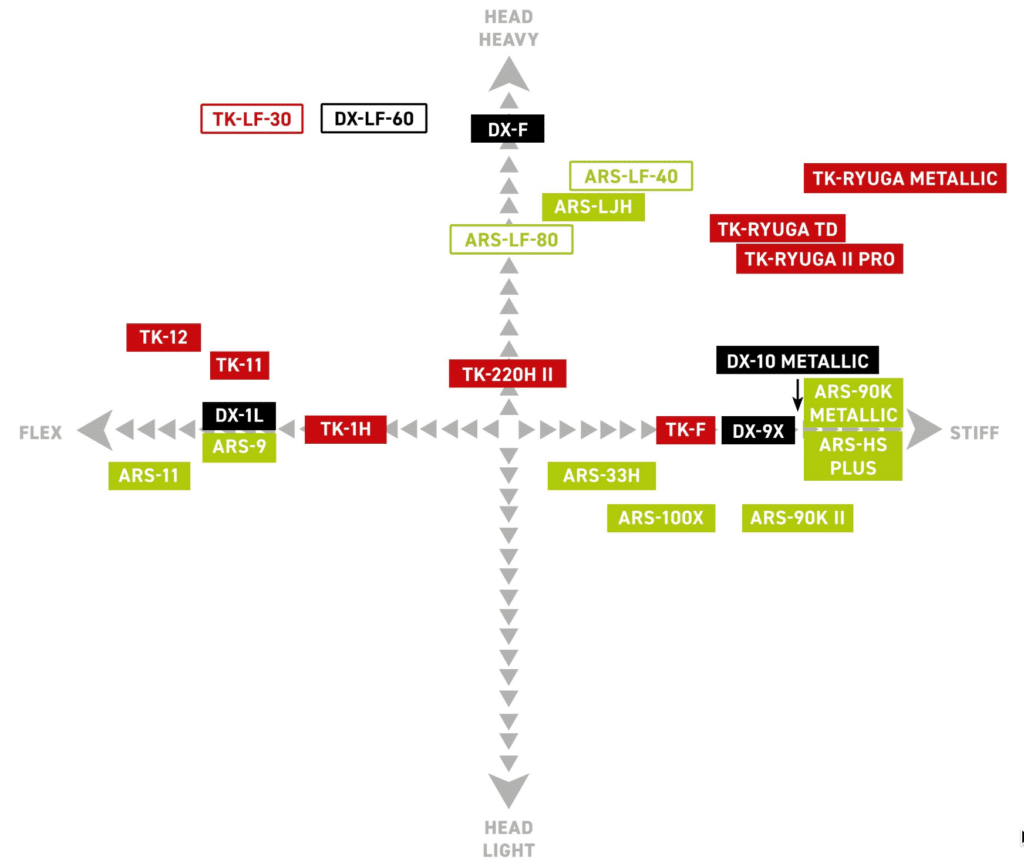There are a ton of badminton rackets out there and while you might already be familiar with Yonex, Victor, and Li Ning, most of the models have confusing technical names that look more or less identical at first glance. That makes it surprisingly difficult to figure out how to choose a badminton racket.
Just look at the Astrox series on Yonex’s website. Can you tell the difference?
How about the Victor rackets?
This is the case with every single top producer of badminton rackets.
It’s confusing as f*ck, and I have no clue why it seems like you need a degree in “racket engineering” to figure out what’s what.
There’s a lot to consider before getting a new racket. Look at what these badminton players on Reddit think.
There’s a lot of attention on the balance point and weight class of the rackets. Sometimes playing style too.
I’m surprised to see that there isn’t more focus on the (shaft) stiffness as that has a big impact on your timing and how cleanly your stroke connects with the shuttle, which leads to more shot power with less effort and fewer mishits.
If you’re using a racket that’s too stiff, correcting it will not only improve your game. It’ll also cost you less money as the stiffer and more demanding rackets cost more money, yet make your life more difficult.
Things get even more confusing as modern rackets begin to blend smash power and speed as we see with the Yonex Nanoflare 1000– and Astrox 100-series, as they challenge our typical assumptions. In doubles, for example, you’ll see many players with crazy smashes using an even balanced racket or even a head light one.
Many of us beginner and intermediate players haven’t developed our playing style just yet. Instead, we just choose a head heavy racket because we at least know we like smashing, if nothing else.
I’d like to propose an alternative way of how to choose your badminton racket since it’s difficult to try rackets and get a feel for how they are before buying one.
If you’re like me and have wasted money buying several rackets you didn’t like that are now just collecting dust in the closet, I bet you’ll like this.
But before we dive in, let me point out that there’s a general rule of thumb that’s nice to keep in mind as you browse rackets: most singles players prefer the heavier 3U rackets whereas doubles players prefer the lighter 4U (yes, the higher the number, the lighter it is).

Different brands have different classifications for their weight scale but the most common ranges from F to U, which is the one I’ll be using here.
The industry appears to be leaning towards the 4U, which means that several of the newer rackets intended for beginner and intermediate players are not made in the heavier 3U weight class at all.
I’ve broken this guide on how to choose a badminton racket into two chapters: one for beginners and another for intermediates.
Let’s dive into how to pick a racket for beginners first.
How to choose a badminton racket for beginners
Selecting rackets without much game experience is a special challenge on its own. Instead of leaving you with the usual recommendation of looking at the balance point, stiffness, weight class, and playing style, I’ll take a different approach.
After testing a bunch of rackets and talking about gear with players and readers, I’ve noticed three beginner player archetypes that keep coming up again and again. If you fall into one of these, choosing the right racket will be easier.
Let’s look at the first one.
1. The entry-level player coming from the backyard to the court
If you’ve played casually with friends in the backyard, but wanna get on court and take things more seriously, this is for you.
You’re likely struggling to get enough power to hit the backcourt consistently while getting tired and strained in your forearm and shoulder after a while.
In preparation for this article, I’ve been testing a few rackets with players in this category to see what they prefer. I notice power and lightweight being the most popular combination, which tends to be difficult to combine.
If you feel that you fall into this category, you’ll prefer starting with a lighter-weight 4U racket and avoiding the most powerful rackets so you don’t get tired. You see, their swing can feel heavy since most of the weight is placed near the top (head) of the racket.
(If you feel fragile and get tired more easily than the average person, you might prefer an even lighter 5U racket, but these can be hard to find in some countries.)
Instead, a mildly power-based racket is a good fit. Here’s my guide on the best badminton rackets for beginners.
2. The experienced (“high”) beginner
If you’ve got more experience playing on courts and learned some skills, you might be better off with a different racket if you’re looking to improve.
At this point, you feel more confident hitting different shots, even if your technique isn’t perfect, and you rarely mistime hitting the shuttle entirely, provided you manage to reach it in time.
If you lean towards having fun, enjoy a good smash, and don’t care too much about improving your game, you’ll prefer a racket with more power. I’ve shared examples in my guide on rackets for beginner players.
On the other hand, if you’re committed to seriously improving your game, you’ll enjoy and benefit from playing longer, more intense rallies rather than attempting to end the rally quickly with a smash.
This can be a difficult habit to change. One way to introduce more diversity into your game by force is to take away your smash by picking a racket with weak power but better control (precision), so you’ll be forced to consider other shots to win rallies.
The rackets I recommend in the beginner’s guide (or if you’re on a tight budget, the budget racket guide) will be suitable for you.
On the other hand, if you’re regularly doing technical training drills to improve your shots, you can benefit from picking a racket that’s slightly out of your league as you’ll grow into it soon. In that case, you could consider looking at the low-intermediate rackets in my racket guide for intermediate players.
Do keep in mind that this doesn’t apply if you aren’t training shots regularly as learning shot technique while only playing games takes longer, so you’ll lose some of the joy from using a racket you don’t connect well with just yet.
3. The pink racket lover
Finally, some women just want a pink racket. While performance isn’t dependent on color, I get it. I’ll leave a link here once I’ve prepared a list of rackets that come in a pink or girly color scheme.
Besides that, you’ll likely prefer a racket in the lighter-weight category, 4U.
How to choose a badminton racket for intermediate players
At the intermediate level, you know more about yourself and your game, even if you don’t feel super confident in your racket preferences and playing style just yet.
At the low- and mid-intermediate level, there are several options. If you just want a fun racket, steer towards the power-based ones in my guide on the best rackets for intermediate players.
These can also be useful if your footwork isn’t great and you often find yourself late to the shuttle and just want to whip it back over the net. That extra power is often overlooked on medium-soft shots, but tricky to hold back on true soft and controlled shots such as during net duels.
The most common practical issue I’ve noticed is clears and lift shots that aren’t going far enough toward the backline and end up causing you trouble.
Making good quality lifts is such an overlooked skill that it’s worth taking this shot into account when selecting your racket, especially if you mostly play doubles. A good lift makes smash blocking easier, gives you more time to reset and get into position.
If you’re actively working on your technique through drills with a coach on a weekly basis this shouldn’t be a problem. Otherwise, this is arguably the most important shot to get right — especially because we intermediate players tend to play far too many lifts during games anyway.
Since many of us don’t work on mastering lifts every week, I suggest taking note of how effortless it is for you to do good lifts when under pressure before selecting your next racket. Not during easy drills or warm-ups, but rather when you need lifts to get you out of trouble the most.
If the lift comes up short of the backline for doubles serve, you need more power either from your technique or the racket (both forehand and backhand).

If you are serious, consider recording your next game and view the lengths of your lift to better decide.
On the other hand, if you’re keen on developing your game, pick something that will force you to play differently. For example, I like smash rackets but currently play with one that has a weaker smash to force myself to play other shots and develop new tactics.
At the intermediate stage, one of the most common issues is making easy mistakes and being impatient. You can avoid both by attempting to prolong rallies while waiting for your opponents to make mistakes.
Those recommendations are based on the most common weaknesses among low- and mid-intermediate players that can be fixed with the help of selecting the right badminton racket.
Another way to approach this is by enhancing your strengths even further. If there’s a certain part of the game you love, you could get a racket that helps you be even better there.
Some players love defense and pick a head heavy racket because power blocks are fun, like Kodai Naraoka from Japan, so that’s worth considering too.
If you’re also a defense-lover but feel like your reactions are slow, head light rackets (such as the new Yonex Nanoflare 1000) can help you get the racket in place to hit a better shot if you aren’t ready in your stance when the shuttle comes flying at you.
Finally, there’s the upper intermediate level, but I’m not sure what the biggest weaknesses or strengths tend to be for players here. I’m not there yet!
To finish off this guide on how to pick a badminton racket, let’s dive into how to select the right one for you among the top badminton brands as most players tend to pick a racket from those.
Navigating the racket jungle without a headache (why is choosing a badminton racket so complex?!)
A simple overview of what important specs look like across the brands for beginner and intermediate players seems like the easiest way to show you.
| Badminton Brand | Series-Name | Series Description | Level + Name |
|---|---|---|---|
| Yonex | Astrox | Power | Beginner: Play Intermediate: Game |
| Arcsaber | All-around control (precision) | ||
| Nanoflare | Speed (defense) | ||
| Victor | Thruster | Power | - |
| DriveX | All-around control (precision) | ||
| Auraspeed | Speed (defense) | ||
| Li-Ning | Axforce | Power | Beginner: 1-3 Intermediate: 4-6 |
| Halbertec | All-around control (precision) | ||
| BladeX | Speed (defense) |
Beginners
If you’re interested in Yonex rackets, you’re best off looking for their Play-editions as they are made specifically with beginners in mind. The Yonex Astrox 77 Play would be one example of that.
Their power-based rackets are named Astrox, whereas their all-around and precision (control)-based racket-series are called Arcsaber. Their fast (defense) rackets-series are named Nanoflare.
While the brand Victor makes my current favorite badminton shoe, their naming conversions are so complex it’s a joke. At first, it seems fairly straightforward as their Thruster-series is for power, Auraspeed is for speed, while the DriveX-series is focused on precision (control) and being good all-around.
Where Li-Ning uses a numbered system to tell you the skill level (more on that in a minute), and Yonex has their Play-models, Victor seems to be picking random names and numbers from a lucky draw when it comes to indicating the suitable skill level.
Below is a chart from their 2024-25 brand catalog (page 11) displaying all their current rackets (or at least those they chose to include). The red color is for the Thruster (power) rackets, green for speed (Auraspeed), and black represents the DriveX-series (all-around and control).

Interestingly, there’s no description of why some of those boxes are transparent and others not. Usually, you’ll look for beginner rackets on the left side of the middle (those with more flex), but those names seem to be random.
At first, I wanted to show you a direct comparison for each of the three different brand catalogs, but I’ve decided against it as they use the same graphics to display different things. That makes things more confusing than helpful.
Anyway, moving on to the last of the three big badminton brands: Li-Ning.
Like Yonex, they’ve made it easier to find beginner rackets. Their power-based racket series is called Axforce, their all-around control-series is Halbertec, and their defensive speed category is named BladeX.
They also have Tectonic (power), Aeronaut (all-around control), and 3D Calibar (speed), but those appear to slowly be phased out for those above.
To identify the right skill level their rackets use numbers. While there are several, it’s usually just the first number that tells the skill level (i.e. 9 in 9000). The numbers 1-3 indicate rackets for beginners.
Next, let’s do a quick overview for intermediate players.
Intermediates
I’ll keep things simple as the different racket-series stay the same and only the skill level changes.
For Yonex, Game-rackets are for intermediates. With Li-Ning, the numbers 4-6 indicate intermediate.
For Victor, it isn’t as clear, so I’d stick with something around the middle in their graphic above, rather than going far out to either the left or right-hand side (in their charge about).
1 comment
Thanks for sharing such an useful information (technical aspects) regarding Badminton rackets????????